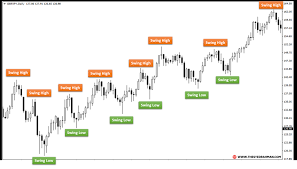A Comparative Look at Indian and U.S. Stock Market Trends
As of April 12, 2025, the global financial landscape is witnessing a fascinating contrast between the Indian and U.S. stock markets. While India’s equity markets have come under pressure due to inflation and foreign capital outflows, the U.S. markets are experiencing a recovery phase following a volatile period.
Indian Stock Market: Facing Headwinds Amid Global Uncertainty
Major Indices Record Decline
On April 12, Indian stock markets closed lower for the third consecutive session, largely influenced by weak global cues and cautious investor sentiment. The BSE Sensex fell by 793.25 points, closing at 74,244.90, while the NSE Nifty 50 dropped 234.40 points to settle at 22,519.40.
This consistent downtrend signals a period of consolidation, where investors are taking profits amid concerns of global instability and upcoming corporate earnings in India.
Sectoral Performance: Broad-Based Losses
A glance at sectoral indices reveals a widespread decline:
- Pharmaceuticals: Stocks like Sun Pharma dropped nearly 4% amid weak Q4 projections.
- Automobiles: Major auto firms, including Maruti Suzuki, faced selling pressure and dropped over 2.75%.
- Consumer Goods: Titan fell over 2.2% due to sluggish demand signals.
- Banking and Financials: Several private sector banks saw marginal declines as FIIs (Foreign Institutional Investors) booked profits.
Key Factors Behind the Market Weakness
There are several reasons contributing to the downturn in Indian equities:
- Foreign Fund Outflows: FIIs have been offloading Indian assets due to the strengthening U.S. dollar and higher bond yields in Western economies.
- Inflationary Pressures: Rising fuel and food prices are expected to impact consumer spending and corporate margins.
- Geopolitical Tensions: Global conflicts and trade tensions are raising concerns about global growth prospects, which reflect in investor sentiment in emerging markets like India.
U.S. Stock Market: Recovery Gaining Momentum
Indices Rebound Strongly After Recent Sell-Off
After a period of heightened volatility, U.S. markets have shown impressive resilience. On April 11, the Dow Jones Industrial Average surged by 4.95%, the S&P 500 climbed 5.7%, and the Nasdaq Composite jumped 7.3%. These gains represent one of the best single-day performances in months and indicate a strong bounce back from recent lows.
Economic Indicators Shaping Market Direction
Several critical data points and policy signals influenced the turnaround in U.S. equities:
- Pause on New Tariffs: Recent announcements of a pause in tariff hikes helped ease global trade concerns, which lifted investor sentiment.
- Inflation Data: Although inflation remains high, it was in line with market expectations, avoiding further panic.
- Federal Reserve’s Stance: The Fed signaled a measured approach to future rate hikes, suggesting that data—not speculation—will drive decisions going forward.
Consumer Sentiment Remains a Concern
Despite the market recovery, there are still signs of underlying economic stress in the U.S.:
- Low Confidence Levels: Consumer sentiment has fallen to levels not seen since the 2008 financial crisis.
- Stagnant Wage Growth: Only 35% of surveyed consumers expect their income to rise in the next year, the lowest since 2011.
- Debt Pressures: Household debt is increasing, particularly in credit card and mortgage segments.
Strategic Outlook from Analysts and Wealth Managers
Investment firms such as UBS Global Wealth Management advise a balanced strategy going forward. Analysts recommend exposure to both growth sectors like technology and safer defensive sectors such as healthcare and consumer staples. This diversification is intended to protect portfolios from volatility while capturing potential upside in a recovering market.
Comparing the Indian and U.S. Markets: Key Similarities and Differences
Shared Concerns Over Inflation and Policy Shifts
Both Indian and U.S. markets are navigating the consequences of high inflation, volatile interest rates, and geopolitical instability. Central banks in both countries are treading carefully—tightening monetary policies without stifling growth.
Divergence in Capital Flows and Investor Behavior
- U.S. Markets Attracting Capital: The relative strength of the U.S. dollar and higher interest rates have made American assets more attractive to global investors.
- India Seeing FII Withdrawals: In contrast, India is experiencing FII outflows, which is adding pressure to the rupee and dampening equity valuations.
Growth Expectations Remain Intact
Despite short-term challenges, both countries have strong long-term fundamentals. India continues to be a key growth story in Asia with its expanding digital economy, demographic dividend, and policy reforms. The U.S., on the other hand, remains resilient due to its technological edge, consumer market strength, and innovation-driven industries.
What Should Investors Do Now?
1. Diversify Your Portfolio
Diversification across geographies, sectors, and asset classes can help mitigate risks associated with individual markets or sectors. Investors should consider blending equity exposure with fixed-income instruments, gold, or even alternative assets.
2. Stay Focused on Long-Term Goals
It’s easy to get swayed by daily market movements, but short-term volatility often presents opportunities for long-term gains. Avoid panic selling and stick to your financial plan.
3. Watch Key Economic Indicators
Keep an eye on inflation data, central bank announcements, employment figures, and corporate earnings. These factors will continue to drive the market in both India and the U.S.
4. Consider Professional Advice
Given the complexity of global markets, consulting with a certified financial advisor can help investors make informed decisions based on their personal financial goals and risk appetite.
Conclusion
April 12, 2025, marks a significant day in global market performance. While Indian markets grapple with inflation, global uncertainties, and capital outflows, U.S. equities are showing signs of resilience and recovery. For investors, the key lies in maintaining a disciplined approach, staying informed, and focusing on long-term wealth creation. As always, caution, patience, and a diversified portfolio remain the cornerstones of successful investing in volatile times.






